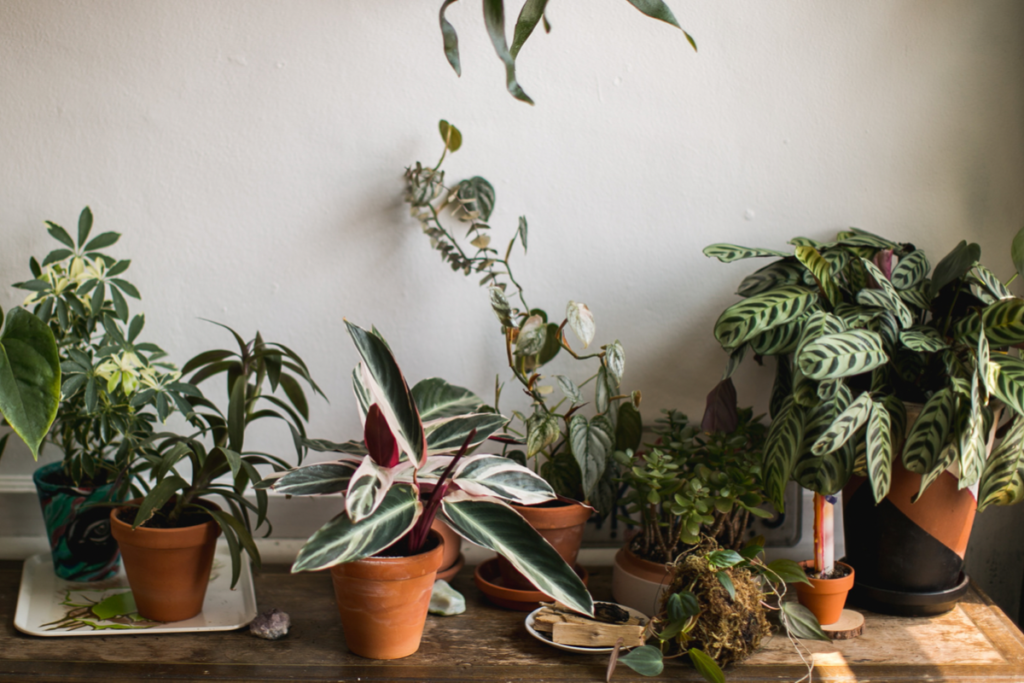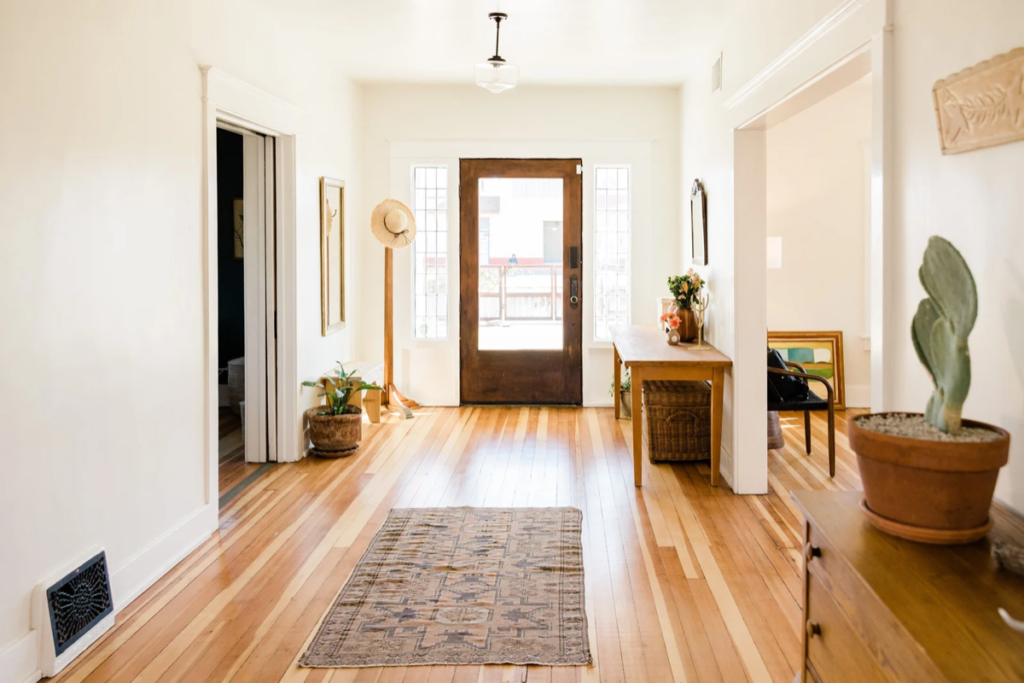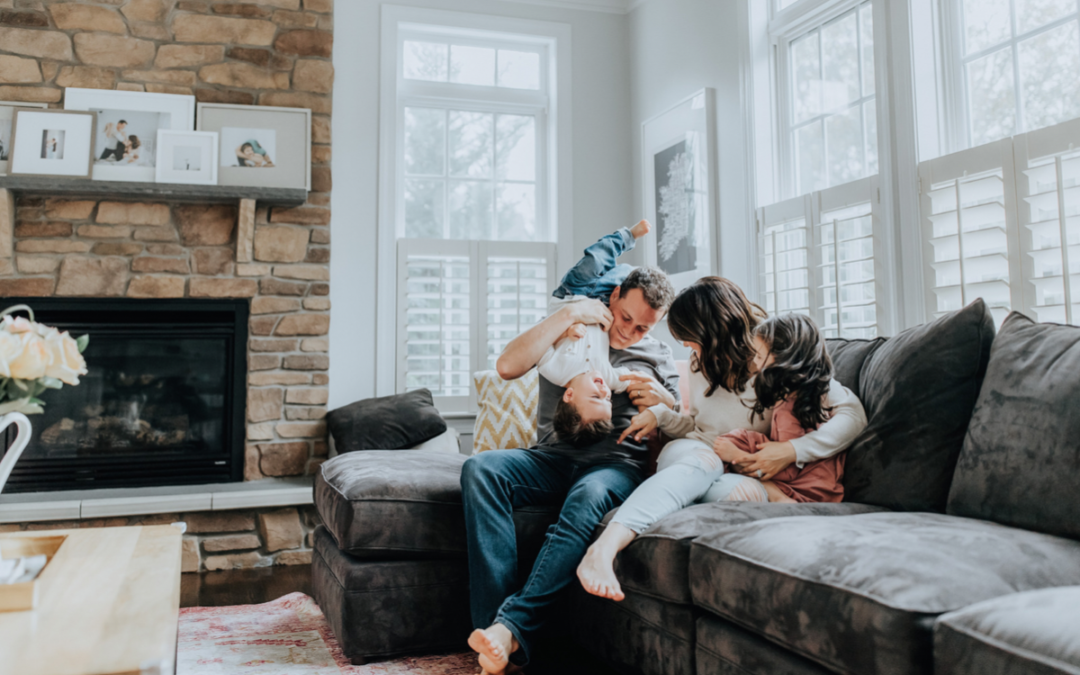When your space is piled with clutter or doesn’t reflect your personality, it can be hard to feel truly at home. Here are some science-backed ways to improve your state of mind—by improving the state of your house.
Keep Clutter Minimal
The first step to being truly happy in your space is to figure out what to keep—and what to let go. “A cluttered room is much more likely to produce, and contribute to, a cluttered mind,” says professional organizer Marie Kondo. A study from Princeton University shows that too much disorganized stimuli simply overwhelms the brain.
Display Meaningful Objects
Kondo’s method uses the test of whether an object “sparks joy” in your heart. When you decide what to keep based on what sparks joy, you are establishing and reaffirming to yourself what is most important to you, It’s not about the latest home design styles—it’s how an object makes you feel. Still love showing off that soccer trophy from third grade? Keep it! As far as how much to display, balance out the chaos in your life with a visually quieter environment.
Show Your Personality
When deciding how a room should look, you might feel taken in by the cool new design trend you saw in a magazine or on HGTV. But Dr. Augustin says making sure your house aligns with your personality is key to feeling happy in your space. Bolder patterns and colors might stimulate extroverts but overwhelm introverts. A recent study shows that introverts were more sensitive to visual stimuli than extroverts, so they should have a more relaxing set-up.
Create A Calming Space
Finding a “sanctuary” in your home gives your mind a place to go to rest and restore, helping you feel more at peace. It doesn’t have to be a whole room—it could be a reading nook, a knitting or craft space, or even a “home spa” in your bathroom. In carving out your sacred space, Dr. Augustin suggests bright but muted colors like sage, soft textures like flannel, warm light, and curved lines in patterns and objects instead of straight lines.

Bring Nature Inside
Studies have shown nature to be calming to our psyche, so one way to feel happier in your space is to bring in plants or flowers. Bringing nature into your home definitely has powerful psychological effects, Houseplants have the added benefit of helping to refresh the air in a room, making you healthier. Even having natural wood furniture in your home partnered with green accessories or wall paint can bring that outdoor feeling inside.
Use Light Well
Psychologists have long known that light has an effect on our emotions. So when choosing what kind of light to have in your home, think about what feelings you’re trying to elicit in the space. Warm light with warm light bulbs is better for when you’re socializing and relaxing, where blue and cooler light is better when you’re trying to do a really analytic task. So cool light might be better for a home office, but use warm light in the living and dining rooms. During the day, open the curtains and keep the windows clean to let the sun in. Natural light is great for our mood.
Keep It Clean
Having a clean home can have physical as well as mental benefits—less stuff means fewer things for dust and dirt to accumulate on, and you’ll be more likely to keep it clean because it won’t be so overwhelming. If you find yourself feeling frantic and overwhelmed, taking a moment to tidy up the kitchen or your bed can really calm those nerves and bring more focus into your mind.
Make The Bedroom A Retreat
Our mood improves when we wake up “on the right side of the bed” after a good night’s sleep, and not getting good sleep has been linked to depression. One way to feel more relaxed is to banish any reminders of unpleasant tasks in the bedroom. If you have your home office in your bedroom, it’s great if the room is laid out so that when you’re actually lying down to go to sleep you don’t see your desk and all the piles of papers. Ideally, the bedroom should be one space to keep tidy.
Find Storage Solutions That Work
Even if your living spaces are clean, if every time you open that closet you’re pegged with an avalanche of stuff, it will still make you feel bogged down. Simple storage methods are the best because they are the easiest to maintain. If everything is simple and easy to access, it becomes not only routine, but a healthy habit, You will always find ‘that thing’ you are looking for much easier, and that extra 10 or 15 minutes you save can be used to do something you truly enjoy.
Choose Mood-Boosting Colors
Your wall color can affect your mood, so it might be time for a new coat of paint. Color psychology is an entire field dedicated to understanding the impact shades have on us. It’s the saturation and brightness levels of hues that determine our emotional response, Energizing colors would be make you happier in a place you do work, like a kitchen, laundry, or exercise room, whereas muted colors are better for a relaxing space, like a family room. Certain colors are associated culturally as well, which can help us feel at home in the space.

Use The Power Of Scent
Studies have shown smell has psychological effects, so use oils or candles to evoke good feelings in your home. Researchers have learned that lavender helps people fall asleep so that can be good for the bedroom, and lemon can be good to smell when you’re trying to do cognitive work like in your home office. Floral scents also elicit positive emotions. But don’t lay it on too strong—scents will continue to have an effect even after your nose gets used to them.
Fill Your Home With Good Memories
Let everything in your house bring up positive remembrances of things and people you love. Each time you look at that picture of you and your friends in Paris, or see the painting you did that turned out better than you ever expected, it helps you keep perspective and connect you with what is good and wonderful in your life. On the other hand, purge the things that remind you of negative experiences and bring you down. Life is too short to be surrounded by stuff you don’t like.
Courtesy of Josie Rees



